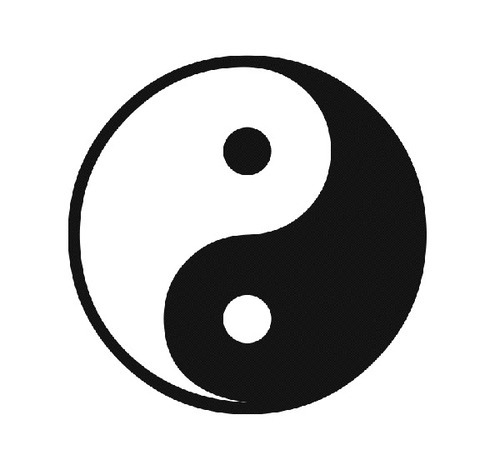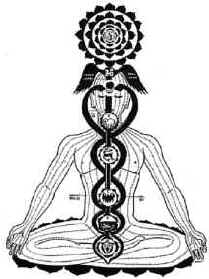Altars are places of worship—centers for yoga or meditation that
infuse the space around them with the energy of your practice. Think of
an altar as a physical manifestation of your inner spiritual landscape.
Artfully laden with images and objects that remind you of your own best
self, an altar gives you the opportunity to consciously reflect on
things you might otherwise take for granted. It’s a place of solace and
repose that becomes a receptacle for your spiritual energy. And when you
sit before it, that energy is reflected back to you.
Whether you’re meditating, practicing asana before your altar, or
simply pausing for a moment as you walk by, a personal altar can be a
beautiful way to reconnect with your deepest intentions for your
practice and your life. Whatever you choose to place on it, says kirtan
musician Sean Johnson, “an altar is a mirror of the heart, a reflection
of the energies and attributes and love that you carry inside.”
http://www.yogajournal.com/article/lifestyle/devoted-to-you/
Here are some beautiful images of altars that I found online. The first caught my attention because of the rough stone and asymmetrical legs. It wouldn't even need anything on it and it would be compelling to worship at.
This next example caught my attention simply because of the overall ambiance--the view through the large windows, the bear-skin rug, the natural sunlight--which the lovely altar perfectly completes.
This last example demonstrates an artistic, earthy and altogether awesome set up of chakra bowls, filled with, I can only presume, their corresponding gemstones. Who wouldn't want to lotus up and zen out?
So ultimately, there are endless ways to create your own personal altar. But don't get so caught up in trying to have all the perfect pieces that it prevents you from just jumping in and getting one started. I speak from personal experience that I spent way too much time daydreaming about the perfect altar and inadvertently put-off getting started for
months. It's the perfectionist in me. Finally, after becoming frustrated with waiting, I just hopped in the car and soon found myself pulling into the Home Depot parking lot. About fifteen minutes later, with one box of nails and one rather heavy beam of redwood, I loaded up the car and headed back home to a somewhat surprised husband.
"What's this new project?" my husband asked, curiosity mixing with anxiety.
"Oh..." I stutter, "Did I not mention that I'm building an altar?"
"Well, no, I don't suppose you mentioned that." Not upset, just a titch confused.
"Oh. Well, yep, I'm gonna build myself an altar!"
"And, may I ask, what exactly is an altar?"
He was quickly on board (board? no pun intended) with the project since he has been eagerly trying to meditate more often. Ultimately, it turned into a rather fun project for both of us. He busted out his power saw and cut the beam into three pieces. Then we hammered in some nails. Voila! Right? Wrong. As soon as my one-year-old toddled over and pulled himself up to a stand using the altar for balance it tipped over and fell apart. We pulled out the bent nails and came up with a sturdier design, which only involved cutting one more length of wood to serve as a crossbeam. Then it was ready.
I had already loved the idea of putting the altar right below one of my bedroom windows that faces the south and gets a lot of natural light throughout the day. I decided to cover it with a beautiful scarf and have slowly been waiting for the right pieces to manifest themselves to make it to the place of honor atop our altar. Currently (it changes from week to week), from left to right, you'll see
1. the God Can -- a little place I stash written prayers when I know it's something out of my hands and only "God Can" handle. Once it's in the can, I'm not allowed to worry about it. I can only sit back and vibrate.
2. "Cosmic Serpent" foil print by local artist Miriam Tribe. Okay, so she's also a good friend of mine and we read the book
The Cosmic Serpent by Jeremy Narby for our book club. She made a foil print for all of us. For me the serpent represents the universal language of faith. Read the book for more insight ;-)
3. necklaces (hanging on the picture frame) carved from large seeds that have the symbol "om" and a tree. I got these in Spain and bought them from the artist himself.
4. candle
5. incense burner (above the candle sitting in the window frame). We got this on our honeymoon to Lava Hot Springs.
6. a picture of my guru Christ.
And since this is a shared altar for both my husband and I we have our own little section underneath the altar to stash our favorite reading material that bolsters our spirituality. Things we hope to add soon: gemstones (with chakra bowls maybe?), meditation cushion, pictures of other gurus, tingsha bells...who knows?
Don't I know, it's rather humble compared to the amazing altar photos posted above, but I'm just getting started! I'm excited to see how my altar evolves over the years as
I evolve, because after all, it's like Sean Johnson said, “an altar is a mirror of the heart, a reflection
of the energies and attributes and love that you carry inside.”
For now, it's become a meaningful addition to my bedroom. Do I suddenly meditate and study every day like I've always wanted to? Not yet. But I stop in front of it many times each day, sometimes just gazing at the pictures and smelling the redwood scent, but most of the time it's to stoop down and pick up the picture frames that my toddler knocked over during one of his covert stops in my bedroom. Either way, I'm stopping, I'm slowing down, I'm tuning in.
What will you put on your altar?
http://www.gobodhiyoga.com/



















